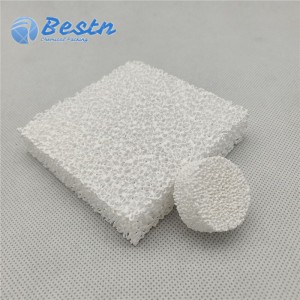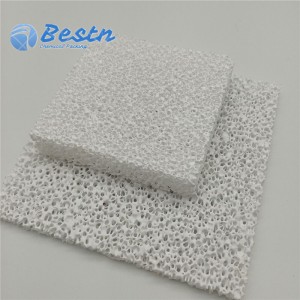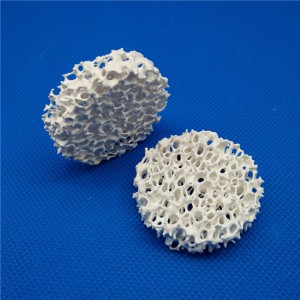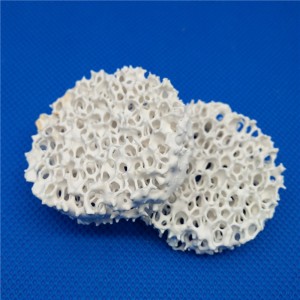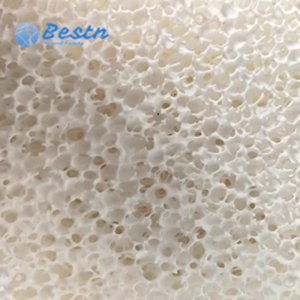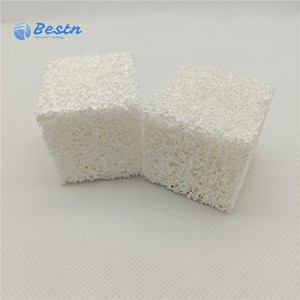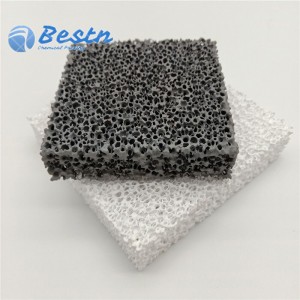
Alumina Ceramic Foam Filter for Molten aluminium alloy filtration
Alumina Ceramic Foam Filter for Molten aluminium alloy filtration
|
Dimension (mm) |
Dimension (inch) |
Pouring rate (kg/s) |
Filtration capacity (ton) |
|
178*178*50 |
7*7*2 |
0.2-0.6 |
5 |
|
228*228*50 |
9*9*2 |
0.3-1.0 |
10 |
|
305*305*50 |
12*12*2 |
0.8-2.5 |
15 |
|
381*381*50 |
15*15*2 |
2.2-4.5 |
25 |
|
430*430*50 |
17*17*2 |
3.0-5.5 |
35 |
|
508*508*50 |
20*20*2 |
4.0-6.5 |
45 |
|
585*585*50 |
23*23*2 |
5.0-8.6 |
60 |
|
Material |
Alumina |
|
Color |
White |
|
Pore Density |
8-60ppi |
|
Porosity |
80-90% |
|
Refractoriness |
≤1200ºC |
|
Bending Strength |
>0.6Mpa |
|
Compression Strength |
>0.8Mpa |
|
Volume-weight |
0.3-0.45g/cm3 |
|
Thermal shock resistance |
6times/1100ºC |
|
Application |
Aluminium, Aluminium alloys and other Non-ferrous alloys |
1. Decontaminate the melting metal liquid
2. Simplified gating system
3. Improve the metallurgical structure of the castings
4. Reduce imparitied of the castings
5. Improve casting quality rate
6. Reduce casting internal re-oxidation defects
7. Reduce the surface defects after machining of the castings
1.Increased Fluidity
Removal of inclusions makes the metal more fluid, resulting in easier mold fill, better cast structure, and better thin section castability.
2.Reduced Mold and Die Wear
Removal of inclusions and other nonmetallic debris from the melt reduces die soldering and mold-metal interaction, which degrades the mold surface and service life.
3.Longer Tool Life
Oxide as well as intermetallic inclusions create “hard spots” that damage tools in machining and finishing operations. Filtration reduces tool wear and increases productivity.
4.Fewer Rejects
Inclusions nucleate porosity, create hot tears during solidification,cause surface defects that mar appearance, and often reduce mechanical properties. In many cases, filtration cuts rejects from such causes to virtually zero. Improvements in yield to near 100% and reduced reject rates to at or near 0% are common.
1. Sand casting
2. Shell casting
3. Low-pressure die casting
4. Permanent mould casting
5. Holding and transfer systems



